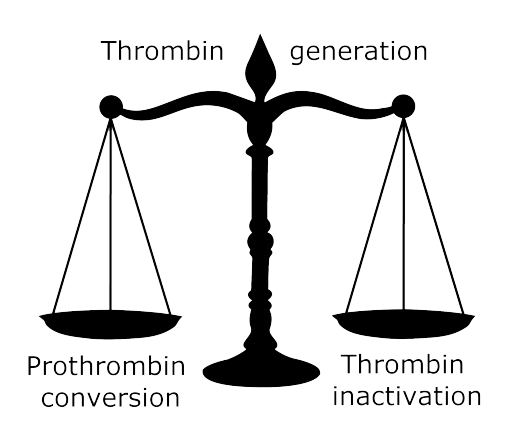Thrombin Dynamics Analysis

The main procoagulant pathway in thrombin generation is prothrombin conversion and the main anticoagulant pathway is thrombin inactivation. When prothrombin conversion and thrombin inactivation are balanced, hemostasis is achieved and thrombin generation looks normal. If prothrombin conversion is elevated, or thrombin inactivation is reduced, this causes the balance to tilt toward the pro-coagulant side: thrombin generation is elevated. Vice versa, when prothrombin conversion is reduced or thrombin inactivation is increased, this will result in reduced thrombin generation, which is associated with bleeding.
Thrombin dynamics analysis can be used to:
(1) Pin point changes in thrombin generation in patients with diseases or drugs affecting the coagulation system, such as:
- the antiphospholipid syndrome
- liver cirrhosis
- hemophilia
- antithrombin deficiency
(2) Predict the effect of specific changes in the pro- and/or anticoagulant pathways on thrombin generation using computational modeling
- treatment of hemophilia A with FVIII infusions
- treatment of post-surgery bleeding with prothrombin complex concentrates


